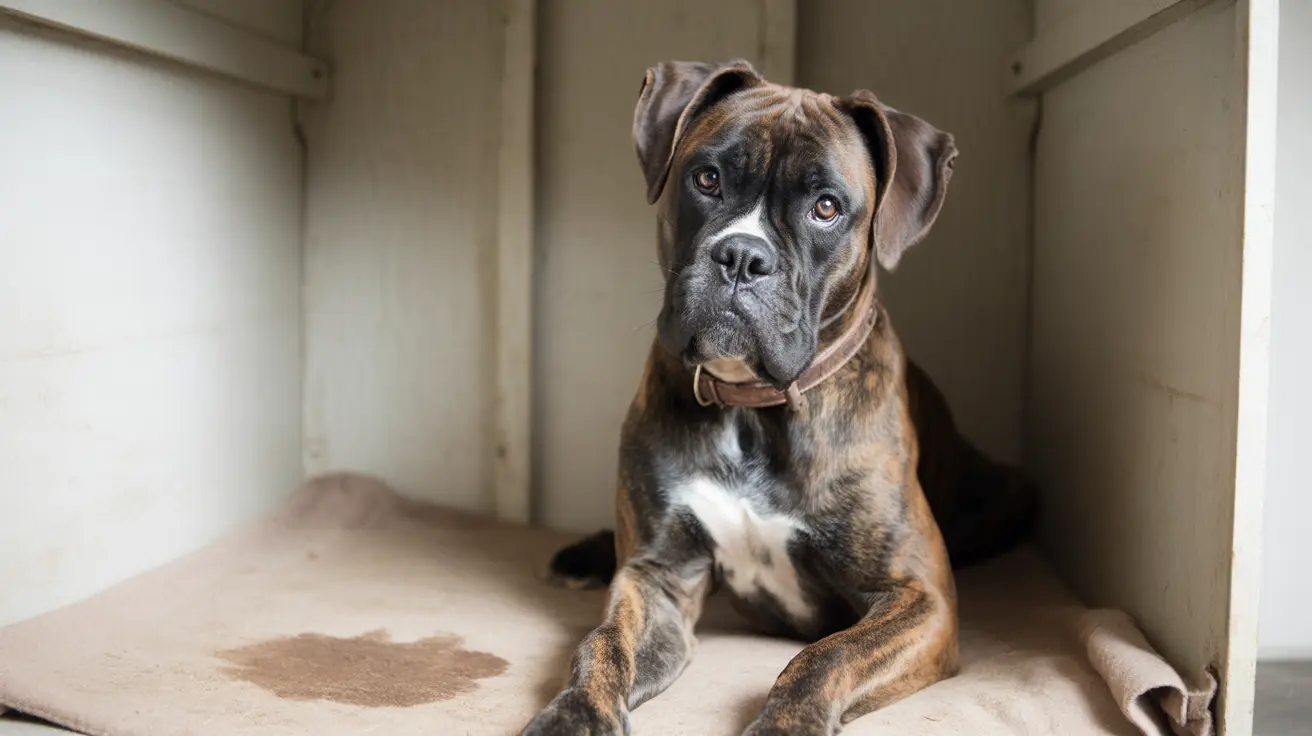Finding that your dog has pooped in their crate can be frustrating and concerning. This behavior, while distressing, is more common than many pet owners realize and can stem from various causes ranging from medical issues to training gaps. Understanding why your dog keeps pooping in their crate is the first step toward solving this challenging problem.
In this comprehensive guide, we'll explore the root causes of crate soiling, provide practical solutions, and help you establish effective strategies to prevent future accidents. Whether you're dealing with a puppy in training or an adult dog who's suddenly developed this habit, we'll cover everything you need to know.
Common Reasons Why Dogs Poop in Their Crates
Medical Issues
Before addressing behavioral causes, it's crucial to rule out medical problems. Digestive disorders, parasites, and inflammatory bowel disease can cause unexpected bowel movements. If your previously house-trained dog suddenly starts having crate accidents, schedule a veterinary check-up to ensure there are no underlying health concerns.
Improper Crate Training
Many crate accidents occur due to incomplete or inconsistent training. Dogs naturally avoid soiling their sleeping area, but this instinct needs to be properly developed through positive reinforcement and consistent routines. Without proper training, dogs may not learn to hold their bowel movements or signal when they need to go.
Essential Crate Management Tips
Proper Crate Sizing
The right crate size is crucial for preventing accidents. Your dog's crate should be large enough for them to stand, turn around, and lie down comfortably, but not so spacious that they can designate a "bathroom corner." If your crate is too large, consider using a divider to adjust the space as your dog grows.
Establishing a Regular Schedule
Consistency is key in preventing crate accidents. Feed your dog at the same times each day and maintain regular potty breaks. Most dogs need to eliminate within 30 minutes after eating, so plan accordingly. For puppies, the general rule is they can hold it for their age in months plus one hour (up to 8 hours maximum for adult dogs).
Training Solutions and Prevention Strategies
Positive Reinforcement
Always reward your dog for eliminating outside. Use high-value treats and enthusiastic praise to reinforce that outdoor potty breaks are desirable. Never punish your dog for crate accidents, as this can create anxiety and make the problem worse.
Exercise and Potty Breaks
Ensure your dog gets sufficient exercise and multiple potty opportunities throughout the day. A tired dog is less likely to have accidents, and regular bathroom breaks help establish a reliable elimination schedule.
Creating a Positive Crate Environment
Comfort and Security
Make the crate a welcoming space with comfortable bedding (unless your dog soils it). Place the crate in a quiet area of your home where your dog can relax without feeling isolated. Consider covering wire crates partially to create a more den-like atmosphere.
Cleaning and Maintenance
Thoroughly clean any accidents with enzymatic cleaners to eliminate odors that might encourage repeat incidents. Regular cleaning helps maintain the crate as a clean, comfortable space your dog won't want to soil.
Frequently Asked Questions
Why does my dog keep pooping in his crate even though he's house trained?
Sudden crate soiling in a house-trained dog often indicates either a medical issue, anxiety, or schedule disruption. Consult your veterinarian to rule out health problems, and review recent changes in routine or environment that might be causing stress.
How long can a dog be left in a crate without having accidents?
Adult dogs can typically hold it for 6-8 hours maximum, while puppies need more frequent breaks based on their age (months old plus one hour). However, regular breaks are important for both physical and mental well-being.
What medical issues could cause my dog to poop in his crate unexpectedly?
Common medical causes include gastrointestinal infections, parasites, inflammatory bowel disease, food allergies, and age-related conditions. Any sudden change in bathroom habits warrants a veterinary examination.
How can I stop my puppy from pooping in his crate during training?
Establish a consistent feeding and potty schedule, reward outdoor elimination, and ensure the crate is appropriately sized. Watch for pre-potty signals and never leave your puppy crated longer than they can reasonably hold it.
What crate size and setup help prevent dogs from pooping inside?
Choose a crate that's just large enough for your dog to stand, turn around, and lie down. Use dividers for growing puppies, ensure proper ventilation, and place the crate in a quiet area away from high-traffic zones.
Conclusion
While dealing with a dog pooping in their crate can be challenging, understanding the underlying causes and implementing appropriate solutions can help resolve this issue. Remember to be patient, consistent, and positive in your approach, and don't hesitate to seek professional help if the problem persists despite your best efforts.






